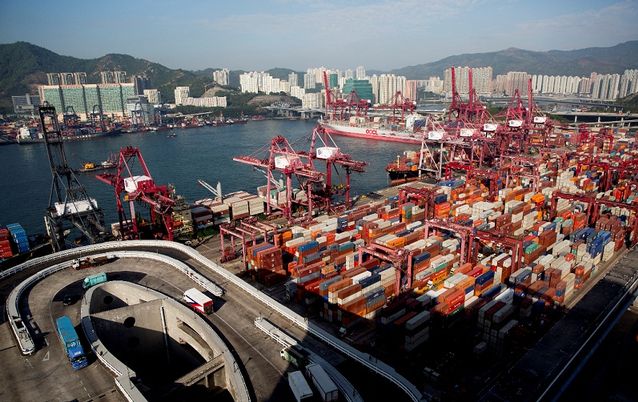-
Tips for becoming a good boxer - November 6, 2020
-
7 expert tips for making your hens night a memorable one - November 6, 2020
-
5 reasons to host your Christmas party on a cruise boat - November 6, 2020
-
What to do when you’re charged with a crime - November 6, 2020
-
Should you get one or multiple dogs? Here’s all you need to know - November 3, 2020
-
A Guide: How to Build Your Very Own Magic Mirror - February 14, 2019
-
Our Top Inspirational Baseball Stars - November 24, 2018
-
Five Tech Tools That Will Help You Turn Your Blog into a Business - November 24, 2018
-
How to Indulge on Vacation without Expanding Your Waist - November 9, 2018
-
5 Strategies for Businesses to Appeal to Today’s Increasingly Mobile-Crazed Customers - November 9, 2018
China producer prices slide to six-year low in July
The latest numbers show China’s foreign trade dropped 7.3 percent year on year in the first seven months of 2015.
Advertisement
The drop, which exceeded the median estimate for a 5 per cent decrease, extends declines to 41 straight months.
Imports also fell heavily, suggesting domestic demand might be too feeble to offset the weaker global demand for China’s exports.
“The government is now pushing infrastructure spending”, said Yang Zhao, economist at Nomura.
China exports were down more than had been expected during July, hobbled by lower demand across the European Union and a strong yuan.
The producer price index (PPI) fell 5.4 per cent from a year earlier, the National Statistics Bureau said on Sunday, compared with an expected 5.0 per cent decline.
China’s turbulent stock markets, which have fallen by nearly a third since peaking in June, also add a new sense of urgency for top officials as they try to ensure a stable financial system can fund Beijing’s efforts to rekindle economic growth.
The slump in exports “compounds downward pressure on China’s economy and threatens to bring exchange-rate depreciation onto the table as a tool to restore competitiveness”, Tom Orlik, chief Asia economist at Bloomberg Intelligence, wrote in a research note Saturday.
The central bank of China has adopted a hard grip on the value of the yuan allowing little movement of its currency in its onshore market.
“Exports are no longer an engine for China growth – no matter what the government does, it’s just impossible to see strong export growth as in the past”, said Bank of Communications economist Liu Xuezhi.
“To avoid such a vicious circle, we need more expansionary policies”, said Su. The currency’s closing levels in Shanghai this week matched the tightest range recorded since a fixed exchange rate ended a decade ago.
The trade surplus doubled to hit 1.87 trillion yuan in the January – July period. Authorities are also expanding policy banks’ lending capacity.
Factory-gate prices of excavated oil and natural gas dropped 34.6 per cent, while those of ferrous metal fell 20.1 per cent, according to NBS. Meanwhile, consumer inflation turned higher in July, picking up pace to 1.6% year-over-year from 1.4% in June, though that was still well below the government’s ceiling of 3% for the year. This follows a 1.4pc rise in June.
Advertisement
“It’s because of weakness in domestic steel demand, which has led mills to push their excess out into the worldwide market, and that’s something which is not going to change”, Citigroup Inc Hong Kong-based commodities strategist Ivan Szpakowski said by telephone yesterday.





























